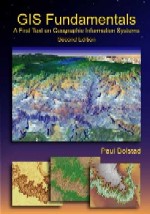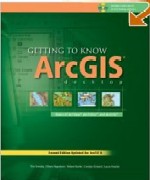
ANNOUNCEMENTS
none
none
LEARNING OBJECTIVES
- Define spatial analyses
- Discuss the flow of input, operations and output when performing spatial analyses
- Define spatial scope and list 3 common ways spatial scope is characterized.
- Describe selection operations.
- Describe set algebra
- Describe Boolean algebra
- List and describe several commonly used spatial selection operations
- Define classification
- Define dissolve. Why might dissolve be used?
- Describe several proximity functions discussed in the book. Specifically describe all aspects of buffering
- Discuss the overlay operations described in the book.
TERMS TO KNOW
- spatial data analysis
- spatial operations or spatial functions
- spatial scope
- local operations
- neighborhood operations
- global operations
- selections operations
- on-screen query
- set algebra
- Boolean algebra
- adjacency
- containment
- classification
- reclassification or recoding
- binary classification
- equal-interval classification
- equal-area classification
- natural-breaks classification
- dissolve
- proximity functions
- buffering
- fixed distance buffering
- compound buffering
- nested or multi-ring buffering
- variable distance buffering
- overlay operations
- clip
- intersect
- union
CLASS DISCUSSION / READING
GIS Fundamentals - Chapter 9 - Basic Spatial Analysis - GET THE POWERPOINT SUPPLEMENT HERE - refresh page if it does not download
ACTIVE LEARNING EXERCISES
Getting to Know ArcGIS - Chapter - Chapter 10 Selecting Features by Location
Getting to Know ArcGIS - Chapter - Chapter 11 Preparing Data for Analysis
Getting to Know ArcGIS - Chapter - Chapter 12 Analyzing Spatial Data <== we probably won't get to this one!
GIS Fundamentals - Chapter 9 - Basic Spatial Analysis - GET THE POWERPOINT SUPPLEMENT HERE - refresh page if it does not download
ACTIVE LEARNING EXERCISES
Getting to Know ArcGIS - Chapter - Chapter 10 Selecting Features by Location
Getting to Know ArcGIS - Chapter - Chapter 11 Preparing Data for Analysis
Getting to Know ArcGIS - Chapter - Chapter 12 Analyzing Spatial Data <== we probably won't get to this one!



No comments:
Post a Comment